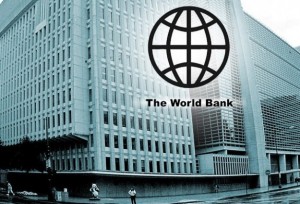World Bank has approved a $375 million loan to India for developing its first waterway project – The National Waterway 1. Under this project, a navigable stretch of 1360 km will be developed on River Ganga from Varanasi (in Uttar Pradesh) to Haldia (in West Bengal). The loan has maturity of 17 years and grace period of 7 years.
Important details about National Waterway 1 Project:
National Waterway 1 (NW1) passes through some of India’s most densely populated cities and industrial belts. 40% of traded goods in India are either shipped from this region or are consumed by the markets in this stretch.
- The entire project does not involve any storage of water for which construction of dams/barrages is required. Thus the project will not cause any negative environmental impact nor will it affect the natural course of river.
- Inland Waterways Authority of India (IWAI) – the entity which is responsible for development of this project, has mentioned that the current natural depth of river (2-3 metres) is acceptable for developing navigation channel. The acceptance of these levels eliminates any need for dredging.
Expected benefits from National Waterway 1 Project:
The project will put in place the basic infrastructure required to develop water transportation in this prospective region.
- Construction of multi-modal terminals, ship-repair facilities, RORO jetties and passenger jetties will create direct employment opportunities.
- As a part of this project, the outdated Farakka barrage lock-gate will be modernised, thereby facilitating smoother passage of vessels.
- A more suitable fleet of low-draft barges that can carry up to 2,000 tonnes of cargo in shallower depths will be developed.

- To make travel safe and reliable, state-of-the-art River Information System will be acquired by Inland Waterways Authority of India (IWAI).
- In India, most of the cargo movement takes place through rail and road network. Cost of trade logistics accounts for almost 18% of India’s GDP. Moving cargo by waterways is much faster and cost effective. NW1 will help bring down this cost remarkably in the entire region.
- It has been estimated that once NW1 starts functioning at its full capacity in terms of facilitating cargo passage, it will help to curb 150,000 tons of CO2 equivalent in greenhouse gas emissions annually.
- Moreover, NW1 will be the only option in the region to accommodate the forecasted increase in freight movement in the coming years.
Quick facts about World Bank:
- Formation Year: 1945
- Headquarters: Washington D.C., US
- Current President: Jim Yong Kim






